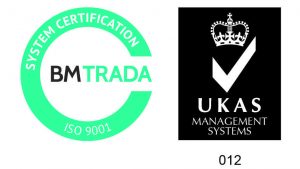A complete picture of the reciprocal allocations appears in Exhibit 6-7. In addition to the allocations to Cutting and Assembly, the Power Department allocates $11,535 to
Maintenance and $5,768 to itself, while the Maintenance Department allocates $3,817 to the Power Department and $5,726 to itself. There may appear to be some
double counting in the Power and Maintenance Departments, but this a normal result when solving simultaneous equations. When we compare the original direct
costs before allocations to the producing department costs after all allocations, it is clear that the double counting has not caused an
overstatement in the final results. The total producing department cost after all allocations is equal to $500,000 as indicated at the bottom of Exhibit 6-7.
- Normally the number of service departments indicates the number of allocations to each producing department.
- In the consecutive period, the HR costs were $160,000 and DP costs were $250,000.
- Three characteristics of LA bear on the speed and ease with which profits can be computed.
- The net realizable value method implies that the increase in sales value from the split-off point to the time of sale is only equal to the after split-off
costs.
Describe the types of relationships between the departments within an organization. We can state the equations more precisely using some symbols and subscripts. Next, incorporate the just-calculated value of S1 in equation 2.
reciprocal method definition
However, if the reciprocal method can be implemented without an undue increase in accounting costs, it is preferred. If not, the double apportionment method should be considered. If this is not feasible, the step-down method could be implemented without losing over 5 percent of the accuracy inherent in the reciprocal method. Even the direct method introduces only a 6.5 percent inaccuracy. For example, hospitals are required to use the step-down method for Medicare cost reporting, which drives most hospitals to use that method in their managerial accounting systems. Similar requirements for group practices, if they exist, could influence the final decision.
Why reciprocal method is better than direct method?
This method partially recognizes other service departments, which makes it more accurate than the direct method. The reciprocal method fully recognizes the other service departments by allowing reallocations back to each service department.
A search for a “fair and
equitable” allocation method often leads the system designer to the “ability to bear” the cost logic. Some examples that most readers can
relate to include allocating the costs of federal, state and local governments to their constituents. Federal and state income taxes are based on the
“ability to bear” logic, i.e., they are progressive in that those with higher incomes pay a higher percentage of their incomes than those with lower
incomes. Whether either of these tax
allocation schemes is also “fair and equitable” is subjective and therefore controversial. For example, those who pay little or no income taxes
tend to receive the greatest benefits in the form of welfare and other government transfer payments. Some observers say this is fair, while others
voice the opposite viewpoint.
Appendix: Service Department Allocation
Therefore, system designers must also carefully consider the motivational, or behavioral aspects of alternative cost allocation
methods. The reciprocal method of cost allocation uses simultaneous equations to capture and allocate 100% of service center (interdepartmental) costs. The disadvantages of the reciprocal method are that it is complicated, and may not justify the effort required for additional accuracy.
This article has provided a look into the use of the reciprocal method as an alternative to more conventional methods of hospital service department cost allocation methods. The reciprocal method can be used with readily available software and with data that are largely already known. This method will provide not only appropriate allocation values for financial reporting but data that can be used for hospital decision making. Once the iterative calculation option is enabled, cell formulas can be used in the template to make the cost allocations (see Figure 5).
Reciprocal method definition
The various departments and applicable variable direct cost, (i.e., the cost identified with these
departments before reciprocal service cost allocations) are presented in Table 1 for the most recent accounting period. The service departments and
allocation proportions for the direct variable costs appear in the lower part of Table 1. In
addition to allocating costs for inventory purposes, management needs accurate cost allocations for a make or buy decision. The company has
always generated its’ own electric power since the plant was built in a rather isolated area of the northwest. However, a new public utility has
recently offered to provide electric power to the plant for 4.5 cents per kilowatt hour.
What are the 3 different methods of allocating joint costs to joint products?
Three methods of allocating joint product costs are the physical units method, the market value method, and the net realizable method. The constant gross margin percentage method is also used to allocate joint cost.
The painting department allocation equals 19 percent of $90,679, which is $17,229. Despite those shortcomings, financial managers should find the reciprocal method much more accessible using this approach. Like the defense contractors that balked at the CASB’s recommendation to use the reciprocal method, many students today find the simultaneous equations method using matrix algebra too difficult to implement.
What is the Reciprocal Method?
Any element of the matrix without a fraction representing an allocation is set to zero. Each row should sum to 1.0 (whether or not the fractions are normalized). Both departments should be allocated ignoring the reciprocal services.
It requires simultaneous equations, a coefficient matrix, matrix inversion, and matrix multiplication to get the cost allocations. And using the sequential method with repeated iterations is very tedious. No one wants to set up a spreadsheet with many rounds of cost allocations. Excel’s iterative calculation option makes the reciprocal method much easier and quicker. The relevant portion of this spreadsheet is the imbedded matrix defined by the rows for the service departments and the columns for the production departments. This portion of the transformed matrix is reproduced in Figure 6 in Christensen and Schneider.
Healthcare Finance Cost Allocation
What does the term traditional two stage allocation process mean? (See Exhibit 6-1 and See the
Baggaley & Maskell summary for an illustration of support functions within a manufacturing environment). We will briefly consider one approach that is similar to the cost reduction method used for scrap (See Chapter 4). Observe https://turbo-tax.org/how-to-keep-accounting-records-for-a-small/ that the denominator for the proportion of service provided from S1 to S2 is 900, not 950. This is because the 50 KWH’s of self service are ignored in the
step-down method. Now assume that the actual number of purchase orders completed during the period was 290 for the Cooking Department and 100 for the Canning Department.
First, LA is expected to increase the speed of executing complex cost allocations. Second, the ability to develop transformed rules (the matrix of intrinsic rules) before costs are known can remove some processing time from the critical path of the close. Third, the transformed rules can be reused as long as the intrinsic rules remain unchanged. For example, if the service department finds additional costs, but its proportion of services provided to other departments remains unchanged, the percentages in the transformed matrix will still be correct. To simplify the example, assume that the first stage cost allocations have already been performed using the reciprocal method as indicated in Exhibit 6-7, thus we are
ready to choose a method for the Stage II allocations.
What is reciprocal cost?
Costs apportioned from a service cost centre to a production cost centre that carries out work for the original service cost centre.


